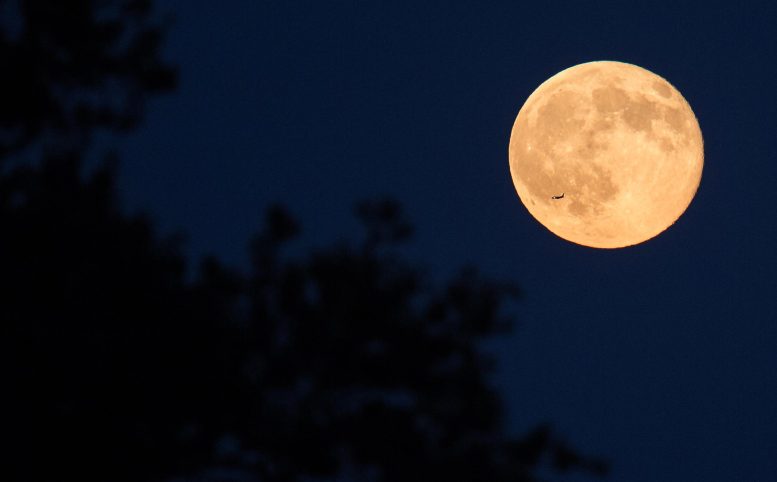
A plane is seen flying in front of the second full moon for the month of July, Friday, July 31, 2015, in Arlington, Va. In recent years, people have been using the name Blue Moon for the second of two full moons in a single calendar month. An older definition of Blue Moon is that it’s the third of four full moons in a single season. Credit: NASA/Joel Kowsky
A trifecta of labels is being applied to the Moon of August 30-31, 2023. It’s a full moon, a supermoon, and finally a blue moon. You may hear it referred to as a super blue moon as a result. It sounds exciting, but what does that really mean? We’ve got you covered.
What is a supermoon?
The Moon travels around our planet in an elliptical orbit, or an elongated circle, with Earth closer to one side of the ellipse. Each month, the Moon passes through the point closest to Earth (perigee) and the point farthest from Earth (apogee). When the Moon is at or near its closest point to Earth at the same time as it is full, it is called a “supermoon.” During this event, because the full moon is a little bit closer to us than usual, it appears especially large and bright in the sky.
This animation shows the difference between a Moon at its closest point to Earth, when supermoons occur, and at its farthest. Credit: NASA/JPL-Caltech
OK, so what is a blue moon?
A blue moon is the term for when we see the full moon twice in a single month. The Moon’s cycle is 29.5 days, so just a bit shorter than the average length of a calendar month. Eventually, that gap results in a full moon happening at the beginning of a month with enough days still remaining for another full cycle ― so a second full moon in the same month. In other words, a full moon that happens on the 1st or 2nd of a month will probably be followed by a second full moon on the 30th or 31st. This happens every two to three years.
People sometimes refer to two types of blue moons: monthly and seasonal. This upcoming moon is a monthly blue moon. Seasonal blue moons occur when there are four full moons in a single season (spring, summer, fall, and winter) instead of the usual three.
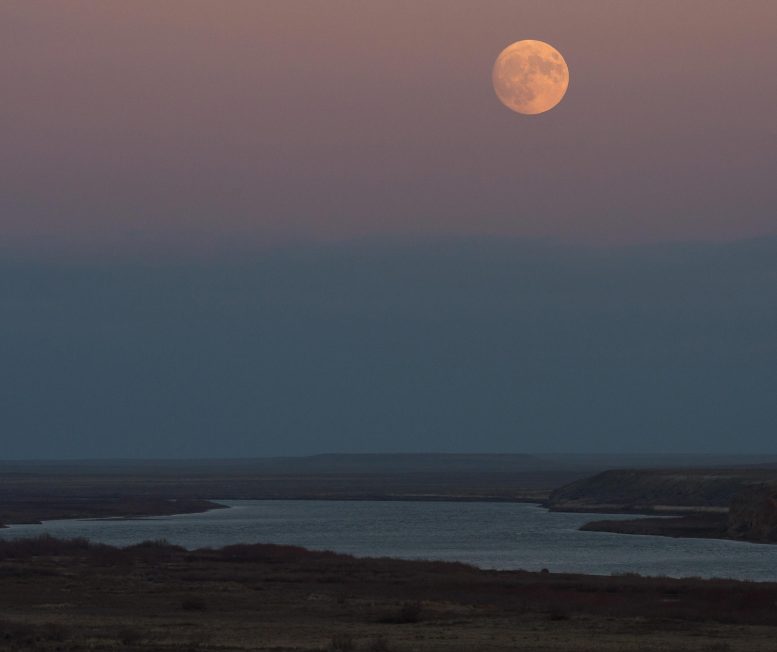
Moonrise over the Syr Darya river in Baikonur, Kazakhstan on November 13, 2016. Credit: NASA/Bill Ingalls
Will the Moon be blue?
No, that’s just the term for two full moons in a month.
Is the Moon ever blue?
On rare occasions, tiny particles in the air ― typically of smoke or dust ― can scatter away red wavelengths of light, causing the Moon to appear blue.
Will this Moon be bigger and more “super?”
You probably won’t notice a big difference in size. When the Moon is closest to Earth (a “supermoon”), it looks about 14 percent bigger than when it’s farthest from Earth. This is similar to the size difference between a quarter and a nickel. Because the Moon will be close to us in its orbit, it will appear a bit brighter than usual.
Do blue moons and supermoons always occur together?
No. The term “supermoon” is used to describe a full Moon that occurs within a day or so of perigee, so they happen three to four times a year. About 25 percent of all full moons are supermoons, but only 3 percent of full moons are blue moons. The time between super blue moons is quite irregular ― it can be as much as 20 years ― but in general, 10 years is the average. The next super blue moons will occur in a pair, in January and March 2037.
So if it’s not blue and not super-sized, is this worth checking out?
Hey, it’s always a good time to look at the Moon! Try NASA’s Daily Moon Guide to see if you can locate some of our recommended daily Moon sights.



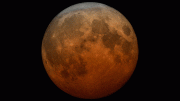


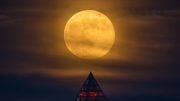
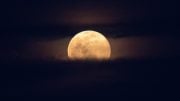
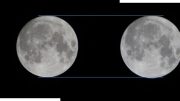
Be the first to comment on "Super Blue Moon Is Coming: What You Need To Know"